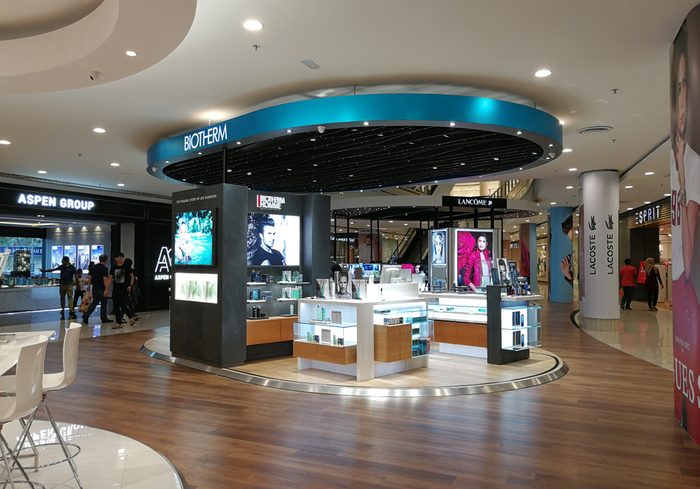
That development started a trend of shopping centers bringing in small carts or kiosks into their properties. In the 1990s, the International Council of Shopping Centers reported that 75 percent of the shopping centers in the U.S. had them. The carts, which also ended up at places like the Prudential Center and Grand Central Terminal, offered shoppers the chance to peruse items ranging from specialty goods to foods and jewelry.
The economics of the carts gracing shopping centers and busy hallways were simple: Merchants could set up a cart that they could operate for as short a time as a week or two and not have to deal with the long-term investment of opening up a brick-and-mortar store. The New York Times, in the 1990s, cited a couple that went from selling personalized key chains and refrigerator magnets at Minnesota’s Mall of America to having a store in the mall – as well as nine employees. (In addition, the couple came to have carts at Alberta’s West Edmonton Mall and Florida’s Sawgrass Mills Mall.)
In addition to helping entrepreneurs, the retail concept also helped malls bring in different sorts of merchants. In some cases, the carts or kiosks could serve as a trial run to see whether a merchant could work as a long-term tenant. Mark Schoifet, a representative from the International Council of Shopping Centers, said in the Times article, “they are a way for a mall to bring in Mom and Pop, trendy and regional retailers, to showcase seasonal merchandise and to evaluate who has the sophistication to become a permanent retailer.”
The spirit of that idea lives on today, as Fourpost is bringing what it calls “studio shops and eateries” to the Mall of America and the West Edmonton Mall. Brands will be able to lease space for a relatively short period of time – six months to one year – in a variety of designs, from standard cubes to triangles and receptacles. The spaces come with the kinds of elements that a retailer would need in a mall, such as lighting, signage, point of sale (POS) hardware and Wi-Fi, as well as access to amenities like event space.
The company aims to bring a range of tenants, from startups to more established digital natives, into a single space to build relationships. The larger idea, according to the company, is to democratize the department store concept and meet the evolving needs of brands.
“Today, brands are demanding better options for brick and mortar,” said Fourpost Founder and CEO Mark Ghermezian in a press release. “The industry has not kept pace with modern retail. We built Fourpost to completely re-architect the process by building a community and breathing fresh air into what has been a stale industry between landlords and brands for hundreds of years.”
To start off its retail concept, the company plans to have 16 brands at the West Edmonton Mall and 22 brands at the Mall of America. Not every company will make the cut, and there are some limitations in place: For instance, the spaces will only have three food and beverage companies, as Ghermezian told Commercial Property Executive that he doesn’t want the spaces to serve as food halls. But the spaces will contain plenty of other tenants offering a range of items, from jewelry to pet accessories and furniture.
Beyond the physical space available, the company seeks to provide a digital backbone to help brands run their businesses. Its software-as-a-service (SaaS) dashboard provides brands with features that include billing, event bookings and business training. “The dashboard helps members navigate storefront data and gain useful insights and analytics to grow their businesses,” the company said in the press release.
Those latest technological advances come to show that the mall kiosks of the past have evolved to not just provide merchants with the space to try out new ideas, but also to connect them with technology to help them grow.